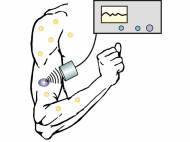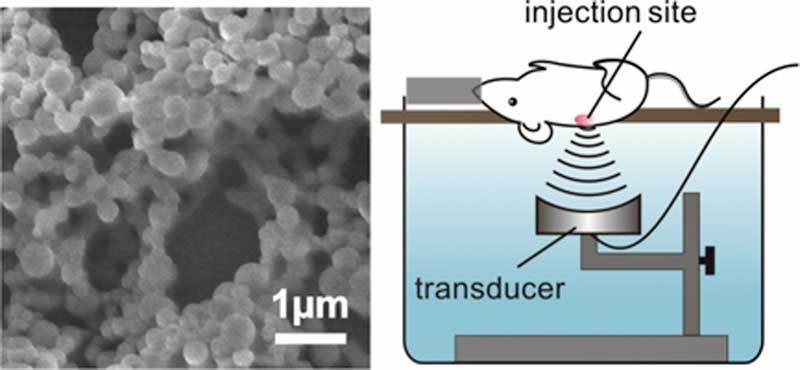Using injectable nano-network and ultrasound to help diabetics
 Collaboration between researchers at the North Carolina State University (NC State) and the University of North Carolina at Chapel (UNC-Chapel Hill) resulted in development of a novel nanotechnology-based technique for regulating blood sugar in diabetes patients. The technique may give diabetics the ability to maintain healthy blood sugar levels painlessly by means of a small ultrasound device.
Collaboration between researchers at the North Carolina State University (NC State) and the University of North Carolina at Chapel (UNC-Chapel Hill) resulted in development of a novel nanotechnology-based technique for regulating blood sugar in diabetes patients. The technique may give diabetics the ability to maintain healthy blood sugar levels painlessly by means of a small ultrasound device.
Patients suffering from type 1 or advanced type 2 diabetes need additional insulin in order to maintain their blood sugar levels in the normal range. Instead having multiple injections of insulin each day, patients may control release of this hormone using injectable nanoparticles and a portable ultrasound device.
These biocompatible and biodegradable nanoparticles are made out of poly(lactic-co-glycolic) acid (PLGA) and are filled with insulin. PGLA nanoparticles are covered with either a positively charged coating made of chitosan (a biocompatible material normally found in shrimp shells), or a negatively charged coating made of aliginate (a biocompatible material normally found in seaweed).
When mixed together in a solution, the positively and negatively charged coatings are attracted to each other by electrostatic force to form a “nano-network”. Nano-network can be injected into the subcutaneous layer of the skin, where it holds the nanoparticles together and prevents them from dispersing throughout the body.
The bulk of the insulin is suspended in a reservoir in the subcutaneous layer of the skin by the electrostatic force of the nano-network. This creates a dose of insulin that waits to be delivered into the bloodstream.
So, using this novel technology, diabetics don’t have to inject a dose of insulin, since it is already in their body. In order to release the insulin from its reservoir into the bloodstream, patients can use a small, hand-held device to apply focused ultrasound waves to the site of the nano-network.
The ultrasound waves excite microscopic gas bubbles in the tissue, temporarily disrupting nano-network in the subcutaneous layer of the skin. That disruption relaxes the electrostatic force and pushes the nanoparticles apart. This allows the insulin to flowing into the bloodstream. When the ultrasound device is removed, the electrostatic force reasserts itself and pulls the nanoparticles in the nano-network back together.
“We’ve done proof-of-concept testing in laboratory mice with type 1 diabetes. We found that this technique achieves a quick release of insulin into the bloodstream, and that the nano-networks contain enough insulin to regulate blood glucose levels for up to 10 days”, said Zhen Gu, assistant professor in the joint biomedical engineering program at NC State and UNC-Chapel Hill.
After approximately 10 days, when the insulin runs out, patients need to inject another nano-network. Since nano-networks are made of biodegradable materials, they can be dissolved and fully absorbed into the body in a few weeks. The research team plans to make this novel technique commercially available for use in clinical practice.
For more information, read the paper published in the journal Advanced Healthcare Materials: “Ultrasound-Triggered Regulation of Blood Glucose Levels Using Injectable Nano-Network”.










Leave your response!